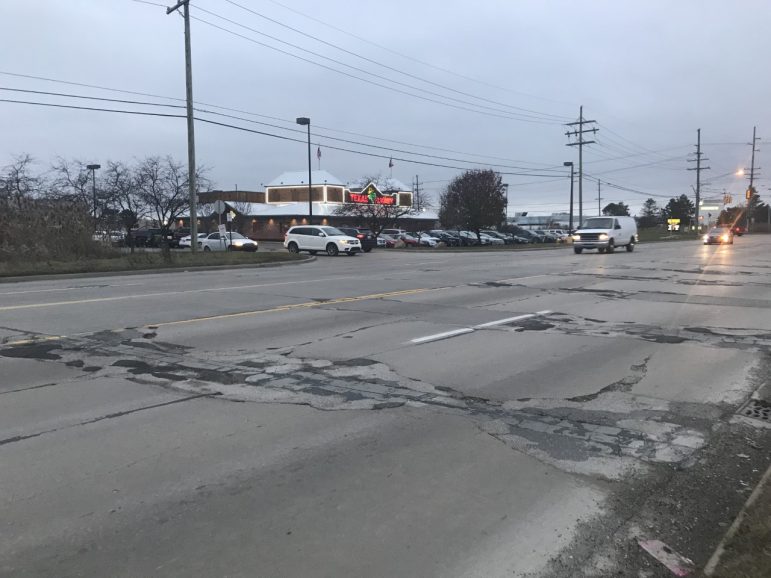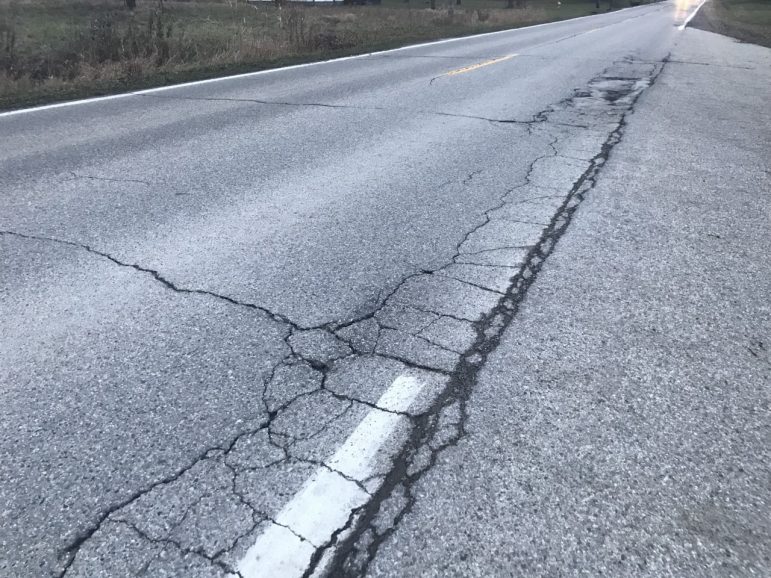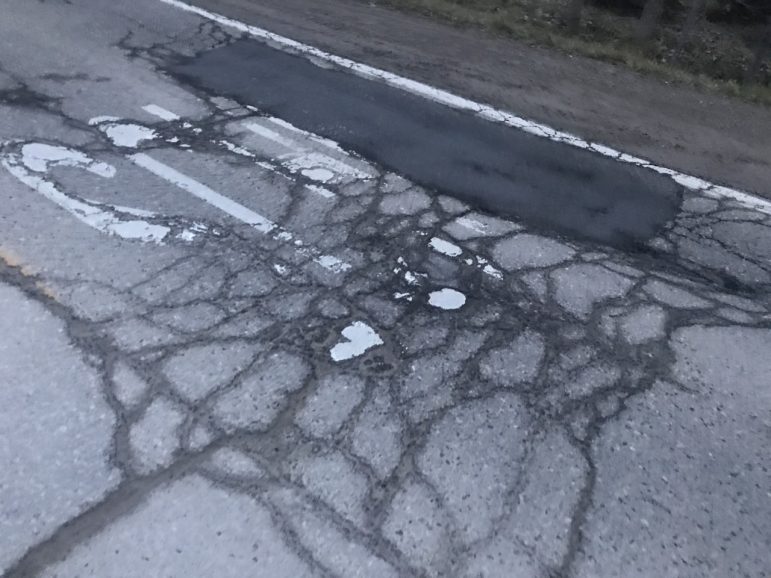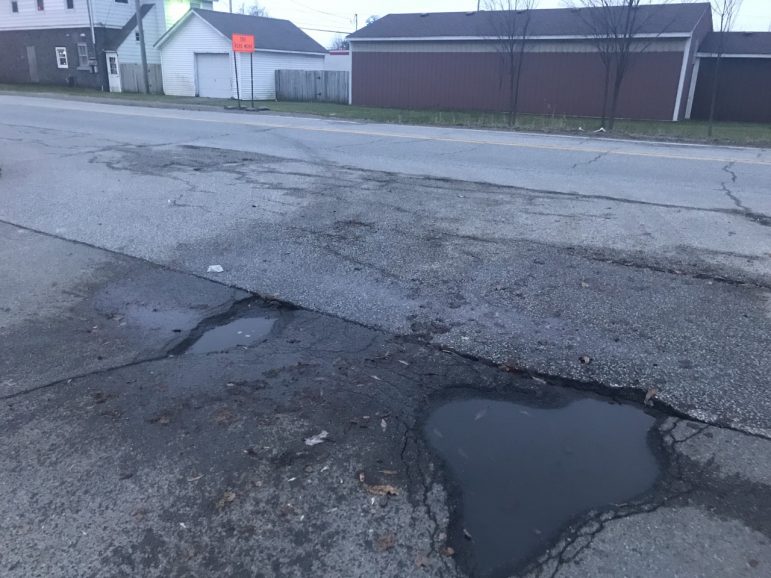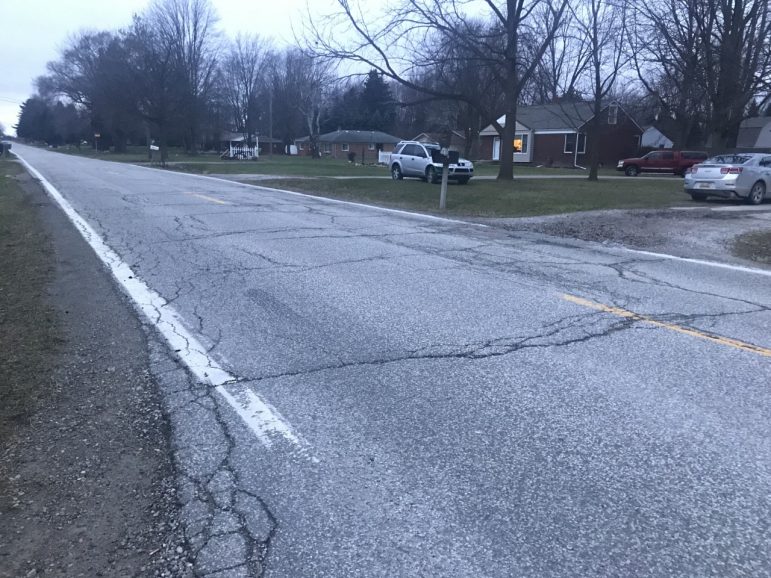Roads in Michigan are notorious for their bad quality and have been the subject of jokes among Michiganders. Those jokes will not be going away any time soon.
A $1.5 billion funding gap was pegged until 2031, according to multiple studies conducted by the Senate Fiscal Agency, a nonpartisan agency that provides analysis to the Michigan Senate. The discrepancy highlights how much is needed to properly fix the roads, and that the funding gap is just for State Highways.
A recent study conducted by the County Road Association of Michigan estimates that the county road system will also require an additional $2 billion per year to get 90 percent of the system’s roads and bridges to “good/fair” ratings by 2029. Cities and counties are in charge of local roads and avenues.
According to the Michigan Department of Transportation, if the funding doesn’t change, Michigan drivers should get used to the potholes.
East Lansing resident Mark Pesce said that this does not surprise him one bit.
“I understand that money’s got to go to other important things such as education and public safety, but something’s got to give,” Pesce said. “I almost avoid Grand River by US-127 because of how much I fear my car getting damaged.”
How does Michigan get money for their roads?
There are three taxes that get included in the sale of gasoline: A federal gas tax of 18.4 cents per gallon, a state gas tax of 26.3 cents per gallon and the state sales tax of six percent. The federal and the state gas taxes go towards the road while the state sales tax goes toward the State’s school aid fund, public transit and many more local-level categories.
Also, the fees associated with registering vehicles in the State of Michigan rose by 20 percent in 2017 thanks to the 2015 legislative road-funding package.
Toll booths are another way to help pay for roads, but unlike Ohio or Indiana, Michigan does not have any on their highways.
Ed Noyola, Deputy Director of the County Road Association of Michigan, said that there is one primary reason toll booths would not work.
“We are a destination state, we’re not a pass-through state. We’re not like Ohio or Pennsylvania trying to get from the East Coast to the West Coast,” Noyola said. “We are a destination spot, so based on that simple logic, we decided to have an open and free access highway interstate system in order to get people here and there.”
Funding gap consequences
A funding gap this big can also affect what ingredients or enhancements go into the concrete mix when fixing roads and can affect the overall performance of the road in terms of durability.
Karim Chatti, a Civil Engineering professor at Michigan State University, said that no matter what grade of concrete is used, the environment can play a role in lowering the quality of the roads over time.
“There are 4 classifications of climate zones, and Michigan is in the worst classification, called Wet-Freeze, or Wet-Freeze climate,” Chatti said. “Which means there’s a lot of rain and snow and so-on, and we have low temperatures. The combination of water and low temperatures is going to cause more damage in general. If you put the same material on the roads here and on the roads in a mild climate, they are not going to last as long.”
Syed Haider, Civil Engineering Professor at MSU, said that it is more expensive to repair a road in “poor condition,” than to maintain a road that is in “fair condition.”
“If we focus on the roads that are in ‘poor condition’, then all of the roads that are in ‘fair condition’ will go into ‘poor condition’, and re-constructing a road in that (poor) condition is the most expensive way to go at it,” Haider said. “It’s a vicious cycle.”
With a state where 41% of the 88,000 lane miles that are given federal aid and around half of the 165,000 lane miles that do not qualify for federal aid in “poor condition”, the problem will only get more and more expensive.
Lane miles are a unit of measurement determined by tracking the number of lanes in a one-mile stretch. For example, one mile on Hagadorn Road would equal four-lane miles because there are four lanes total on that street.
With this vicious cycle combined with the $1.5 billion dollar funding gap, Michiganders should prepare for more trips to the auto repair shop.
Kevin McFarland, automobile mechanic at Belle Tire, said that the winter is the busiest time of year for car and truck repairs.
“It’s a busy time for us during this time of year,” McFarland said. “Peoples’ tires pop off because of potholes, or in some cases there’s significant structural damage to someone’s car. It’s a stressful time of year to drive on the road.”
And more repairs mean more money out of citizens’ pockets. Chesterfield resident Evan Salazar said that potholes have cost him big time.
“I change my tires pretty much bi-annually, and that’s not just some small kind of purchase,” Salazar said. “I know the construction crews are doing their job, but it’s just another thing I have to consider when saving up my money.”
Steps have been taken to make fixing the roads a priority. In March, Governor Gretchen Whitmer unveiled her $2.5 billion dollar plan to help fix the roads that would involve an increase of 45 cents per gallon on Michigan’s State tax on the sale of gas. Also, according to Michigan State University’s latest State of the State Survey, Michigan’s roads replaced its school as a priority for residents.
